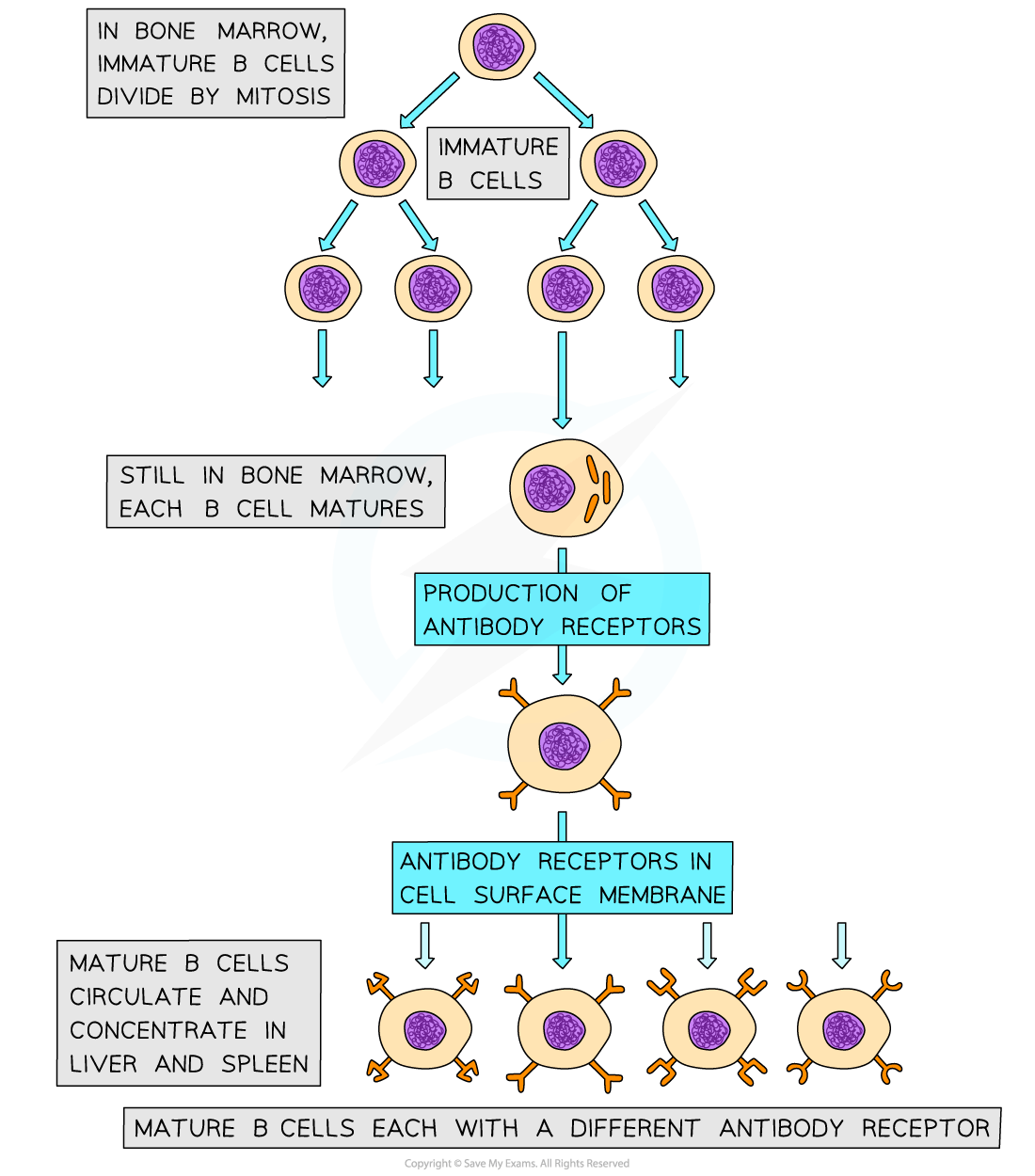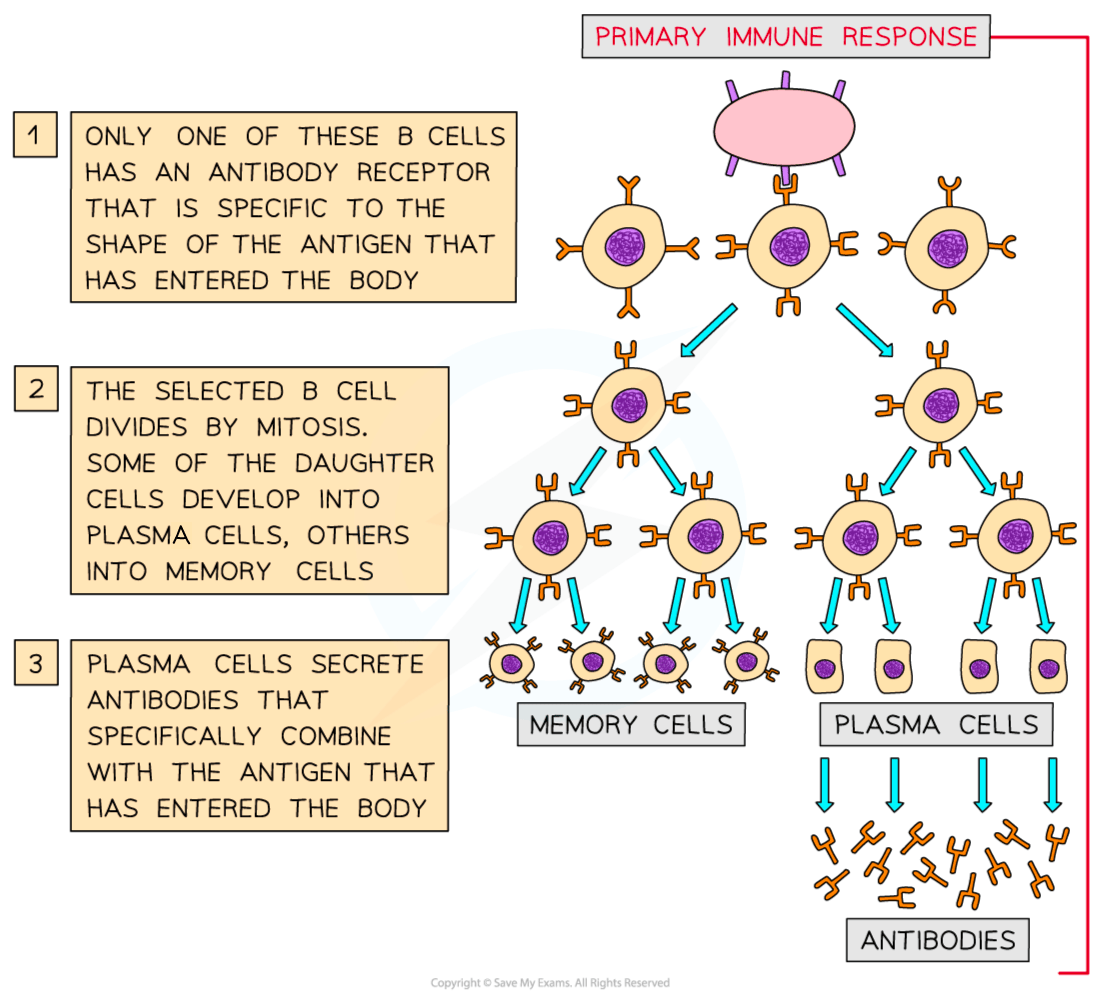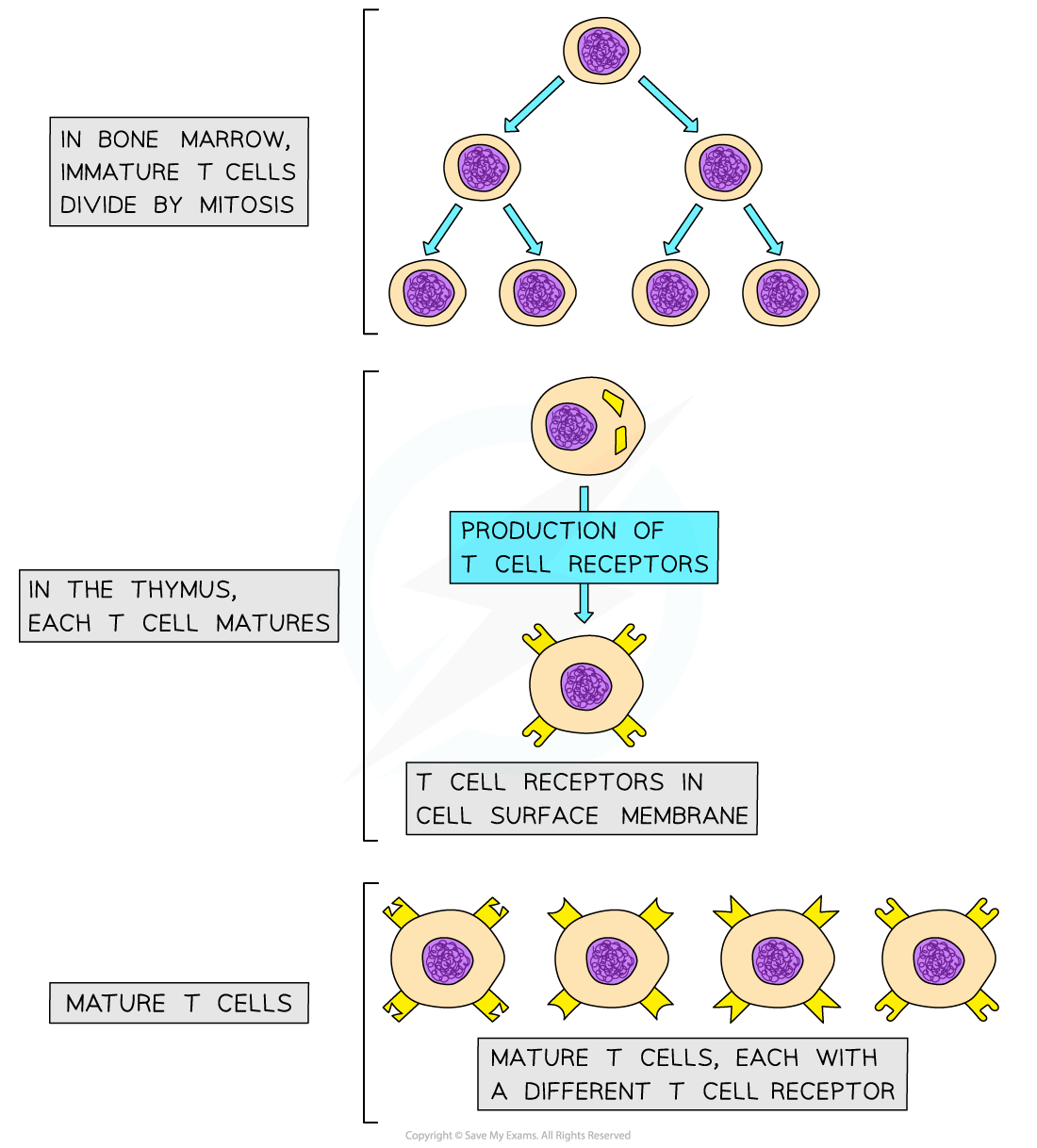Primary Immune Response (Cambridge (CIE) AS Biology): Revision Note
Exam code: 9700
Primary immune response
Lymphocytes are another type of white blood cell
They play an important part in the specific immune response
They are smaller than phagocytes and they have a large nucleus that fills most of the cell
They are produced in the bone marrow
There are two types of lymphocytes with different roles in the immune response
B-lymphocytes, or B cells
T-lymphocytes, or T cells
The action of lymphocytes is triggered by exposure to non-self antigens:
When a pathogen enters the body its antigens are displayed by antigen presenting cells
These antigens may be found:
On the surface of macrophages after phagocytosis
On the surface of infected cells
On the surface of the pathogens themselves
B-lymphocytes
B-lymphocytes remain in the bone marrow until they are mature and then spread through the body, concentrating in lymph nodes and the spleen
Millions of different B-lymphocyte cells are produced within the bone marrow
Once mature, each different B-lymphocyte cell has a different antibody molecule on its surface
At this stage the antibody molecules do not leave the B-lymphocyte cell but remain in the cell surface membrane
Part of each antibody molecule forms a receptor that can combine with complementary antigens from pathogens
These receptors are known as antibody receptors
This is because they are made of antibodies
Each different B cell has an antibody receptor that is specific to one type of pathogenic antigen
This is why the action of B cells is part of the specific immune response

B-lymphocytes in the specific immune response
The arrival of non-self antigens in the body triggers the following series of events in B-lymphocytes
The B-lymphocytes, with antibody receptors that are complementary to the new antigen, come into contact with the new antigen
The B-lymphocytes bind to their complementary antigens and are stimulated to divide by mitosis
This process of finding and stimulating the correct lymphocytes is known as clonal selection
T-helper cells play an important role in initiating the division of B cells at this stage (see below)
The B-lymphocytes divide repeatedly by mitosis, producing many cloned B-lymphocytes with complementary antibody receptors
The cloning of B-lymphocytes at this stage is known as clonal expansion
The cloned B-lymphocytes develop into
Plasma cells that secrete antibodies
The antibodies are complementary to the antigens that initiated the immune response
Memory cells that remain in the blood, providing immunity; these are known as B memory cells

T-lymphocytes
Immature T-lymphocytes leave the bone marrow to mature in the thymus
Mature T-lymphocytes have specific cell surface receptors called T cell receptors
These receptors have a similar structure to antibodies and are each specific to one type of antigen

T-lymphocytes in the specific immune response
The T-lymphocytes undergo a similar process to that seen in B cells
T-lymphocytes are activated when they encounter and bind to their specific antigen
This is clonal selection
These activated T-lymphocytes divide by mitosis to increase in number
This is clonal expansion
These T-lymphocytes differentiate into different types of T cell:
T-helper cells
These cells release cytokines, a group of chemicals that
stimulate B-lymphocytes to divide
cause an increase in the rate of phagocytosis by macrophages
T-killer cells
These cells attach to antigens on the cell surface membranes of infected body cells and secrete toxic substances that kill the infected cells
This response to a newly encountered antigen is known as a primary immune response
Primary responses are slow due to the time taken for clonal selection and expansion

Examiner Tips and Tricks
These events are complex, and you may come across slight variations in the precise order of events and the key terminology used, so you should focus on the main principles, including:
The complementary nature of antibody receptors and T cell receptors to specific non-self antigens
Lymphocytes divide by mitosis to increase the numbers of cells during an immune response
B cells produce plasma cells and memory cells
T cells produce T-helper and T-killer cells

Unlock more, it's free!
Did this page help you?